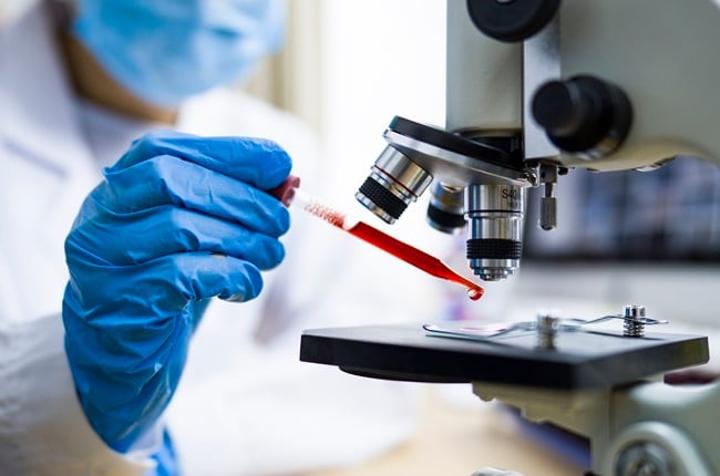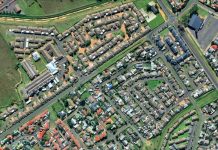Africa-Press – South-Africa. A rare disease can be identified 14 hours after a child’s birth – with one genetic test, doctors could prevent death and disability. Although this life-saving technology exists, experts say there needs to be much greater buy-in from all levels of society before this becomes a reality for South Africans.
In the meantime, many patients will live with a rare disease for seven or eight years – if they’re “lucky” – before receiving a diagnosis. The unlucky ones will go their whole lives without treatment and answers.
Professor Shahida Moosa, head of the rare disease genomics research group at Stellenbosch University’s Faculty of Medicine and Health Sciences, said that for many patients, access to genetic testing and diagnosis of rare diseases depends largely on where they were born and into what circumstances.
Cumulatively, rare diseases affect one in every 15 people. There are more than 7 000 rare diseases, and the majority (around 80%) can be detected with genetic testing, said Moosa.
Kelly du Plessis, founder and CEO of Rare Diseases South Africa (RDSA), said about 4.1 million people in SA live with a rare disease.
“However, the diagnostic rate remains low,” she said.
She added:
RDSA is a non-profit organisation working to ensure that people living with rare diseases and congenital disorders experience greater recognition, support, improved health service and better overall quality of life.
Moosa said the underdiagnosis of rare diseases was a “dire situation” worldwide because rare diseases were not prioritised by governments.
“The length of time until you are diagnosed – what we call the diagnosis odyssey – depends on where you’re born and what access you have to healthcare. It’s the luck of the draw. In a well-resourced country, it could be seven to eight years. If you live in Delft or Khayelitsha, it could be your whole life,” she said.
Diagnosis was “the starting point” in providing a patient with a rare disease medical treatment, Moosa explained. It informed treatments and planning and could affect the entire family. But it also had wider implications, for instance, making it easier for patients to receive disability grants.
A diagnosis was essential in ensuring patients can access treatment, said Du Plessis, especially in the private healthcare sector. Once a confirmation diagnosis was received, the patient could unlock medical aid benefits.
She said:
Early diagnosis was critical for some diseases, said Du Plessis. For example, patients with congenital hypothyroidism could lose an IQ point for every week that they are not diagnosed, she added.
“Often in South Africa, patients are diagnosed so late that they have limited prospects of successful treatment.”
According to Du Plessis, genetic testing is also key in family planning – it allows couples who are at high risk of passing on rare diseases different choices. It also helps build scientific knowledge.
“Genetic testing is incredibly important. There is a lot that can be learnt from our rainbow nation and the vast array of genetics,” she said.
Moosa explained that genomic sequencing remains one of the most effective tools in diagnosing rare diseases – a disease found in one in every 2 000 births – and early detection is key to preventing complications.
Genetic testing looks for mutations in the patient’s DNA – what Moosa calls the “spelling mistakes” in the instruction manual of each individual. Moosa and her team extract DNA samples from blood or saliva, and then this DNA is sequenced. Then the difficult part begins – a researcher must analyse a large amount of data to find the one mutation that is causing the rare disease.
The technology used is cutting-edge, and the research group is the first of its kind in sub-Saharan Africa. But advances in the field are rapidly evolving, explained Moosa.
Recently, a team at the Rady Children’s Institute for Genomic Medicine in California, United States, developed an ultra-rapid sequencing process to diagnose rare diseases in under 14 hours.
It takes the local teams longer than this to produce results, but with the correct support, Moosa believes local genetic testing could have the same transformative effects.
She said:
“Being able to run genetic testing so quickly would be transformative. Diagnosis in the first few days of life can prevent brain damage and situations where children are unable to speak or walk. It can save lives and quality of life. It also helps us to plan for the future and ensure the patient has the right medication and treatment.”
Although genetic testing has a price tag of between R7 000 and R10 000 per patient, it has the potential to save the healthcare system thousands of rands in admissions and testing, said Moosa.
Her work is largely funded by the Early Investigators’ Programme of the South African Medical Research Council.
“We need buy-in at all levels, from government, the health department, healthcare workers, and communities,” she said.
Du Plessis added that the costs associated with testing for rare diseases can be a barrier to patients obtaining a diagnosis, with many patients having to cover these costs themselves.
“The patient may need multiple tests. It can become a bottomless pit financially. This is the reality that many people face: Do you spend R50 000 on testing, or do you spend that on making memories with your family?”
For More News And Analysis About South-Africa Follow Africa-Press






